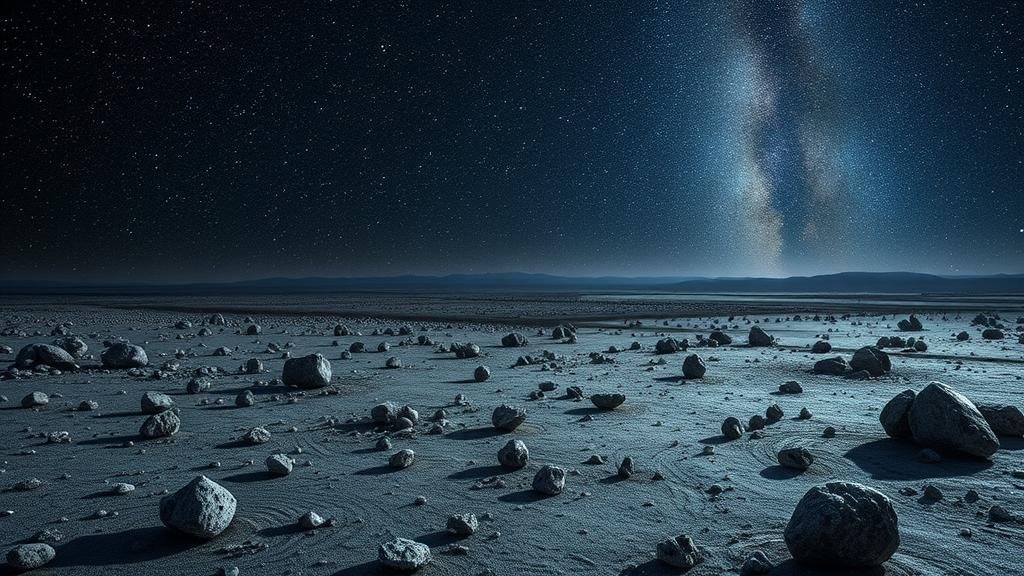Meteorite Fields: Finding Cosmic Gifts in Earth’s Remote Plains
Meteorite Fields: Finding Cosmic Gifts in Earth’s Remote Plains
Meteorite fields present an alluring opportunity for rockhounds and mineral collectors to discover fragments of the cosmos embedded in Earth’s terrain. These fields, often located in remote or arid areas, provide not only a connection to outer space but also insights into the formation of our solar system. This article delves into where to find these meteorite fields, the types of meteorites you can expect, and practical tips for collectors eager to explore.
Understanding Meteorites and Their Significance
Meteorites are remnants of celestial bodies that survive their passage through the Earths atmosphere. When these objects, primarily composed of metals or silicate, reach the surface, they provide significant scientific information about the early solar system. According to NASA, more than 60 meteorite types have been classified, offering insights into everything from asteroids to the lunar surface.
The scientific community heavily studies meteorites to understand planetary geology, space weathering, and even the origins of life on Earth. For collectors, every meteorite carries a story–its age, its origin, and its journey through space.
Notable Meteorite Fields
Across the globe, several locations are renowned for their meteorite finds. Here are some prominent meteorite fields that attract rockhounds:
- Campo del Cielo, Argentina: This field is known for one of the largest meteorite showers recorded. The Campo del Cielo meteorite can weigh over 37 tons and is composed mainly of iron-nickel.
- Allende, Mexico: The Allende meteorite, which fell in 1969, is the largest carbonaceous chondrite ever discovered. Collectors value it for its high-carbon content and traces of organic compounds.
- Chelyabinsk, Russia: This field gained attention after the 2013 meteor explosion. It has become a hotspot for contemporary meteorite hunting, with pieces of the meteorite commonly found in and around the city.
Types of Meteorites
Meteorites are generally classified into three main categories, each with distinct characteristics:
- Stony Meteorites: Comprising about 93% of all meteorite finds, stony meteorites consist mainly of silicate minerals. They are divided further into chondrites and achondrites.
- Iron Meteorites: Formed from nickel-iron alloy, these meteorites are heavier and often have a metallic sheen. They typically come from the cores of differentiated asteroids.
- Stony-Iron Meteorites: These meteorites contain equal parts metal and silicate, making them particularly beautiful and sought after by collectors.
Practical Tips for Meteorite Collectors
Finding meteorites requires patience, knowledge, and a bit of luck. Here are some practical tips for aspiring meteorite hunters:
- Research Locations: Use satellite imagery and maps to identify possible meteorite fields. Look for places with high elevation or sparse vegetation as these features can make meteorites more visible.
- Look for Key Indicators: Meteorites often have a fusion crust, which is a thin, blackened exterior formed during atmospheric entry. The surface may also show regmaglypts, which are thumbprint-like indentations.
- Use a Magnet: Many iron meteorites are magnetic. Carrying a simple magnet can aid in identifying potential finds amidst regular rocks.
- Join Meteorite Collector Groups: Engaging with communities, either online or in local clubs, can provide insights into meteorite identification and the latest hunting locations.
Caring for Your Meteorite Collection
Once youve started collecting meteorites, proper care and documentation are essential. Each meteorite should be stored in a controlled environment to prevent weathering. Avoid direct sunlight and excessive humidity. Also, documenting each meteorites find location, type, and any distinguishing features will enhance its value and interest for future generations.
Conclusion
Meteorite fields are a treasure trove for rockhounds and mineral collectors alike. With the right tools, knowledge, and a bit of determination, collectors can unearth cosmic gifts that not only enrich personal collections but also contribute to our understanding of the universe. Always remember, while the thrill of the hunt is compelling, the science and history behind each find are what make meteorite collecting truly special.



